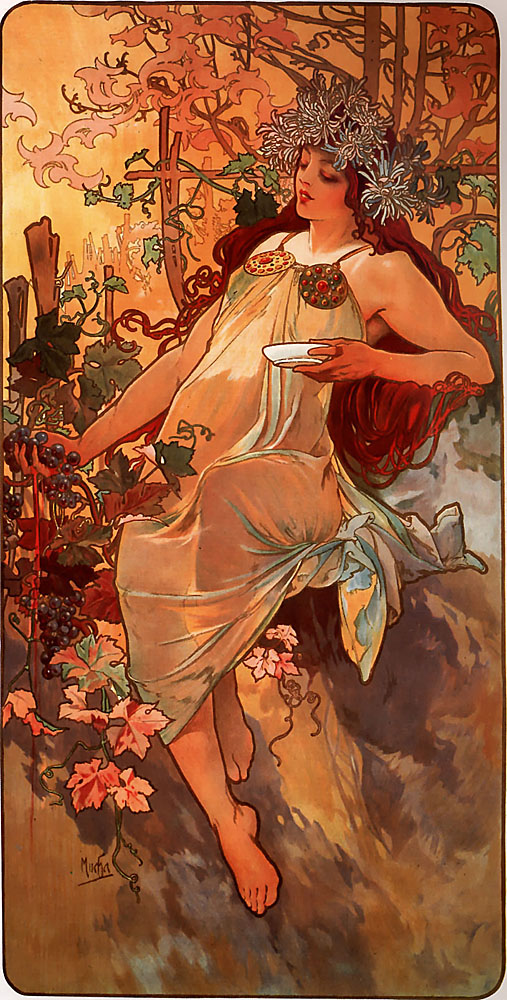Culture of Czechia
From Wikipedia, the free encyclopedia and Czech Philharmonic
Literature
Czech literature is the literature written in the Czech language. The earliest literary works written in Czech date to the 14th century. Bible translations played an important role in the development of Czech literature and the standard Czech language. The first complete printed Czech Bible was published in 1488 (Prague Bible). Franz Kafka was a German speaking Bohemian Jewish novelist and short story writer, widely regarded as one of the major figures of 20th-century literature. His best known works include “Die Verwandlung” (“The Metamorphosis”), Der Process (The Trial), and Das Schloss (The Castle). The term Kafkaesque has entered the English language to describe situations like those in his writing. Jaroslav Seifert was the only Czech writer awarded the Nobel Prize in Literature. An antiwar comedy novel The Good Soldier Švejk by Jaroslav Hašek is the most translated novel of the Czech literature (58 languages as of 2013).

Autumn (1896) by Art Nouveau artist Alphonse Mucha
Art
At the end of the 19th century came a wave of Art Nouveau. Alfons Mucha becomes the main representative. He is today the most famous Czech painter. Max Švabinský was another important Art nouveau painter. The 20th century brought avant-garde revolution. In the Czech lands mainly expressionist and cubist: Josef Čapek, Emil Filla, Bohumil Kubišta, Jan Zrzavý. Surrealism emerged particularly in the work of Toyen, Josef Šíma and Karel Teige. In the world, however, he pushed mainly František Kupka, a pioneer of abstract painting. Art photography has become a new field (František Drtikol, Josef Sudek, later Jan Saudek or Josef Koudelka).
Music
The musical tradition of the Czech lands arose from first church hymns, whose first evidence is suggested at the break of 10th and 11th century. The first significant pieces of Czech music include two chorales, which in their time performed the function of anthems: “Hospodine pomiluj ny” (Lord, Have Mercy on Us) from around 1050, unmistakably the oldest and most faithfully preserved popular spiritual song to have survived to the present, and the hymn “Svatý Václave” (Saint Wenceslas) or “Saint Wenceslas Chorale” from around 1250.
The wealth of musical culture in the Czech Republic lies in the long-term high-culture classical music tradition during all historical periods, especially in the Baroque, Classicism, Romantic, modern classical music and in the traditional folk music of Bohemia, Moravia and Silesia. Since the early eras of artificial music, Czech musicians and composers have often been influenced by genuine folk music (e.g. polka which originated in Bohemia). Among the most notable Czech composers are Bedřich Smetana and Antonín Dvořák in romanticism, and Gustav Mahler, Josef Suk, Leoš Janáček, Bohuslav Martinů in modern classical music. Not forgetting the famous musicians, interpreters, conductors, e.g. Rafael Kubelík, Václav Neumann, Václav Talich, Jiří Bělohlávek, Emma Destinnová, Magdalena Kožená, Rudolf Firkušný, Czech Philharmonic Orchestra.
Czech music can be considered to have been beneficial in both the European and worldwide context, several times co-determined or even determined a newly arriving era in musical art, above all of Classical era, as well as by original attitudes in Baroque, Romantic and modern classical music. The most famous Czech musical works are Smetana’s The Bartered Bride and Má vlast, Dvořák’s New World Symphony, Rusalka and Slavonic Dances or Janáček’s Sinfonietta and operas, above all Jenůfa. The most famous music festival in the country is Prague Spring International Music Festival of classical music.
Film
The tradition of Czech cinematography started in the second half of the 1890s. New era of the Czech film began with outstanding animated films by important filmmakers such as Karel Zeman, a pioneer with special effects (culminating in successful films such as artistically exceptional Vynález zkázy (“A Deadly Invention”), performed in anglophone countries under the name “The Fabulous World of Jules Verne” from 1958, which combined acted drama with animation, and Jiří Trnka, the founder of the modern puppet film. This began a strong tradition of animated films (Zdeněk Miler‘s Mole etc.). Another Czech cultural phenomenon came into being at the end of the 1950s. This project called Laterna magika (“The Magic Lantern”), resulting in productions that combined theater, dance and film in a poetic manner, considered the first multimedia art project in international context.
In the 1960s, so called Czech New Wave (also Czechoslovak New Wave) received international acclaim. It is linked with names of Miloš Forman, Věra Chytilová, Jiří Menzel, Ján Kadár, Elmar Klos, Evald Schorm, Vojtěch Jasný, Ivan Passer, Jan Schmidt, Juraj Herz, Juraj Jakubisko, Jan Němec, Jaroslav Papoušek, etc. The unique personality of the 1960s and the beginning of the 1970s with original manuscript, deep psychological impact and extraordinarily high quality art is the director František Vláčil. His films Marketa Lazarová, Údolí včel (“The Valley of The Bees”) or Adelheid belong to the artistic peaks of Czech cinema production. The film “Marketa Lazarová” was voted the all-time best Czech movie in a prestigious 1998 poll of Czech film critics and publicists. Kadár & Klos’s The Shop on Main Street (1965), Menzel’s Closely Watched Trains (1967) and Jan Svěrák‘s Kolya (1996) won the Academy Award for Best Foreign Language Film.

Miloš Forman was a Czech New Wave filmmaker before immigrating to the United States, later earning a directing Oscar for One Flew Over the Cuckoo’s Nest. He returned to his homeland to film Amadeus, an acclaimed venture that won eight Oscars, including another directing prize for Forman. Among his other works are The People vs. Larry Flynt, Valmont and Man on the Moon. Hair (1979) was Forman’s much-anticipated version of the Broadway musical.





